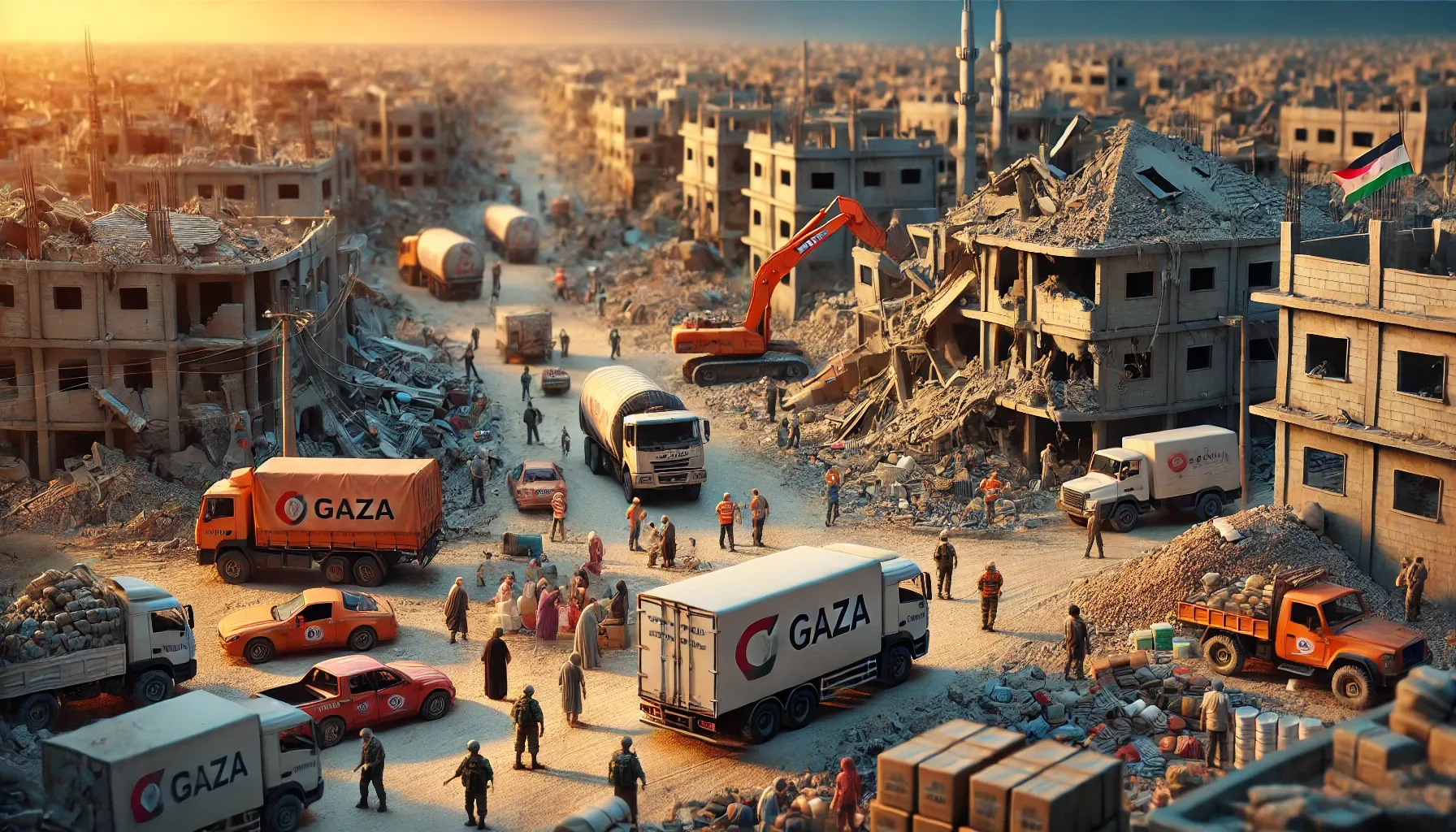Israel and Hamas agree to a ceasefire after 460 days of conflict, including prisoner exchanges and humanitarian aid. The deal aims to halt violence temporarily, but long-term political challenges persist.

After more than 460 days of relentless conflict, Israel and the Palestinian group Hamas have agreed to a ceasefire deal, marking a crucial step toward alleviating the humanitarian catastrophe in the Gaza Strip. The agreement, mediated by Qatar, Egypt, and the United States, aims to halt violence temporarily, facilitate a prisoner exchange, and expedite humanitarian aid into Gaza.
The ceasefire is set to begin on Sunday, with further implementation details under discussion. While the deal is significant, its success hinges on navigating complex political, humanitarian, and logistical challenges.
Key Features of the Ceasefire Agreement
First Phase: Six Weeks of Initial Implementation
- Prisoner Exchange:
- Hamas will release 33 Israeli captives, including women, children, and civilians over 50, who were taken during the October 7, 2023, attacks.
- Israel will reciprocate by releasing a larger number of Palestinian prisoners, including 1,000 detainees arrested post-October 7, many of whom are serving life sentences.
- Israeli Troop Withdrawal:
- Israeli forces will withdraw from Gaza’s densely populated areas to positions within 700 meters of the border, except for the Netzarim Corridor, where a phased withdrawal is planned.
- In the Philadelphi Corridor, bordering Egypt, Israeli troops will reduce their presence initially and fully withdraw by the 50th day of the agreement.
- Humanitarian Aid Surge:
- Up to 600 trucks per day carrying essential supplies will enter Gaza to combat the severe humanitarian crisis.
- Civilians displaced from northern Gaza will be allowed to return home, though many homes have been destroyed.
- The Rafah crossing with Egypt will open within seven days, allowing critically injured Palestinians to seek medical treatment abroad.
- Monitoring and Compliance:
- Mediators, including Qatar, Egypt, and the US, will oversee the implementation of the first phase and ensure parties adhere to the terms.
What Comes After the First Phase?
Second Phase
- If the initial conditions are met, Hamas will release all remaining Israeli captives, predominantly male soldiers, in exchange for additional Palestinian prisoners held in Israeli jails.
- Israel has tentatively agreed to initiate a complete withdrawal from Gaza during this phase.
Third Phase
- The third phase involves a reconstruction plan for Gaza, spanning three to five years under international supervision.
- This phase will also address the repatriation of deceased captives.
- Discussions about Gaza’s future governance will become critical, with the United States advocating for an interim governing authority led by the Palestinian Authority and supported by international partners.
Unresolved Issues and Challenges
No Written Guarantees:
- Israel has insisted on the absence of written assurances, retaining the option to resume hostilities after the first phase.
- This raises concerns about the ceasefire's durability and the commitment of all parties.
Political Divisions in Israel:
- Many far-right members of Israeli Prime Minister Benjamin Netanyahu’s cabinet oppose a complete withdrawal from Gaza.
- Netanyahu’s prior statements on Hamas further complicate efforts to achieve a long-term resolution.
Pathway to Palestinian Statehood:
- Arab states, including Saudi Arabia, demand a clear path to Palestinian statehood as a condition for supporting Gaza’s governance and reconstruction.
- Israeli lawmakers remain divided on this issue, despite earlier agreements to a two-state solution under the Oslo Accords
Post-War Governance:
- The US proposal to involve international partners and Arab states in Gaza’s governance faces skepticism from various factions.
- The absence of consensus on who will administer Gaza post-conflict adds to the uncertainty.
The Humanitarian Cost of the Conflict
- Over 46,707 Palestinians killed and 110,265 injuredand a least 1,139 Israelis killed since October 2023.
- The staggering loss of life underscores the urgency of implementing the ceasefire and addressing the long-term needs of affected populations.
International Implications and Outlook
The ceasefire is a critical but fragile step toward peace. While it temporarily halts violence and facilitates humanitarian aid, its long-term success depends on resolving political divisions, ensuring compliance, and addressing Gaza’s governance and reconstruction. Mediators, including Qatar, Egypt, and the United States, play a pivotal role in sustaining negotiations and pushing for a durable resolution.
Source: Al Jazeera





